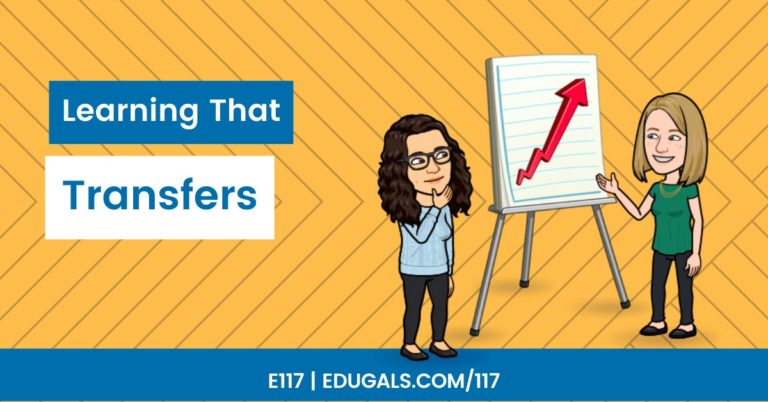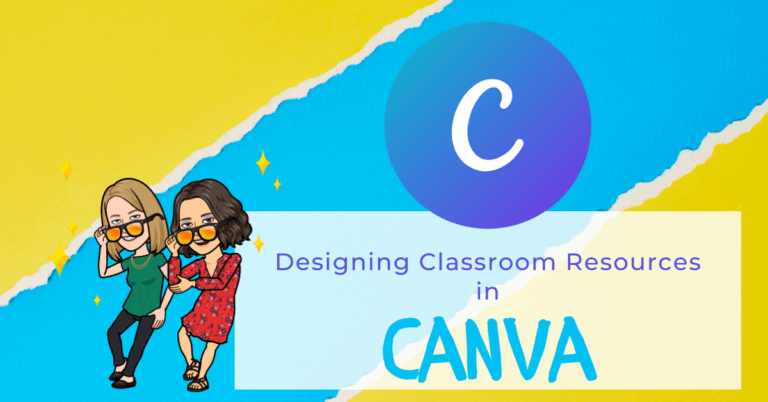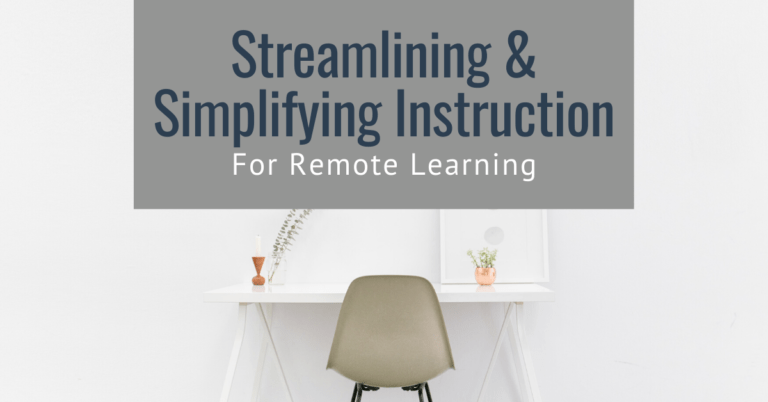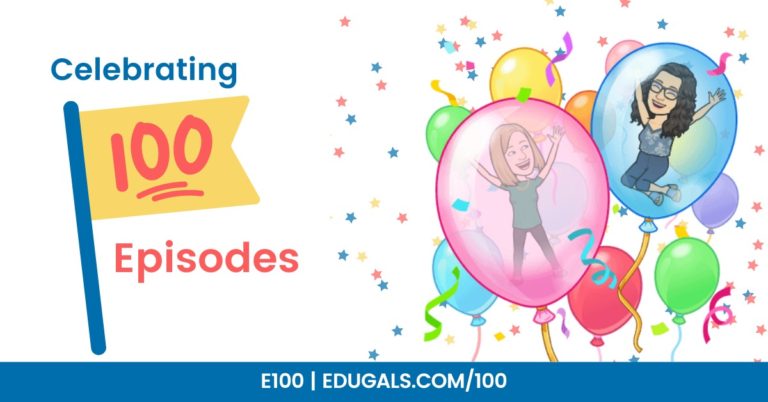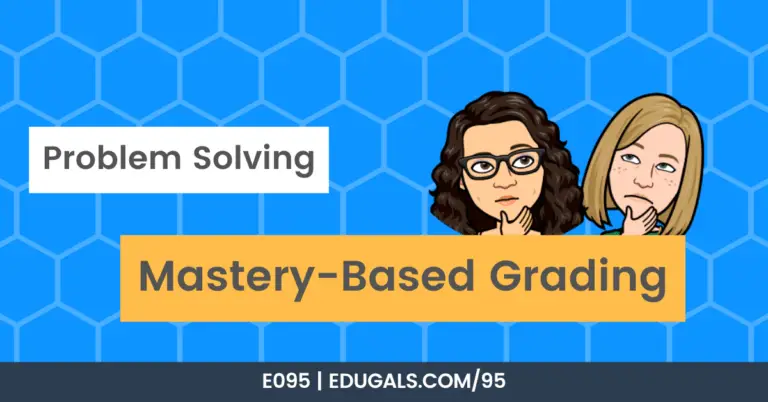[podcast_subscribe id=”7428″]
In this episode, we are exploring how to support English Language Learners (ELLs) in the classroom. We are going to give you some different suggestions as well as some tech tools that will really help with language acquisition.
If you like what you hear, then share this episode with a colleague or friend, and make sure you subscribe so that you don’t miss out on any new content! If you are able, consider supporting the show by buying us a coffee!
We would love to hear from you – leave a comment here, OR check out our FLIPGRID!

Show Notes
This week, we thought it would be a great idea to talk about how we, as educators, can support English Language Learners with their language acquisition in the classroom. We’ve spoken about ELLs a few times, but haven’t dedicated a full episode yet for this learning.
Katie teaches ESL (English as a Second Language – the program), and has a lot of passion for teaching and supporting these learners. Also, Rachel has just recently completed her Part 1 Additional Qualification course in Teaching English Language Learners (TELL), and is excited to share some of her new learning as well!
Together, we will combine that with our love for technology to share some ways for you to support these learners!
Common acronyms used here in Ontario:
- ELL – English Language Learner
- describes the person
- also referred to as multilingual learner (MLL)
- ESL – English as a Second Language
- the program itself
- also referred to as English as an Additional Language (EAL)
- STEP continua – Steps To English Proficiency
- STEPS 1-6, where 1 is beginning to learn English, and 6 is approaching fluency
- gives teachers a snapshot of where students are on their language journey
- used for each of the strands in the OLBs and the OLLBs
- Here is a resource to explain the STEP continua
- OLB – Observable Language Behaviours
- STEP descriptions for each of the language acquisition strands (Speaking/Listening, Reading, Writing)
- used with students that have not had gaps or interruptions in their learning
- For more info, check this out!
- OLLB – Observable Language & Literacy Behaviours
- STEP descriptions for each of the language and literacy strands (Speaking/Listening, Reading, Writing) as well as Orientation to School Life in Ontario
- used with students that have had limited formal education, or who have experienced gaps or interruptions in formal education that have prevented literacy development in their first language
- Check out this site for more information on the OLLBs and their descriptors
Our First Recommendation
Consider taking the TELL Part 1 AQ course (or the equivalent in your area of the world)! You would be shocked at the strategies you will learn, and how they will actually benefit ALL of your students, not just the ELLs in your class.
Tips and Strategies to Support ELLs
Tip 1: We are all language teachers!
Whether you teach math, science, history or English makes no difference whatsoever – every single teacher is an English language teacher. Each course comes with its own vocabulary, academic language, etc. and it is your responsibility as a teacher to ensure that that language is accessible to your students, ELLs or otherwise.
There are two types of language that ELLs are navigating and learning:
- BICS = Basic Interpersonal Communication Skills
- Social language
- CALP = Cognitive Academic Language Proficiency
- Academic language
Social language takes approximately 6 months to 2 years to develop. This tends to be easier to develop because students navigate this language on a daily basis, and in every interaction that they have with other English speakers. It is also a means of survival: social (with their peers) as well as in the real world, where they need to buy things, find their way on public transit, etc. Much of the language needed in these situations is not specialized, and is more easily attached to contexts to help with understanding and vocabulary development.
Academic language, on the other hand, could take 5 years or more to develop. The language is much more specialized, and is not experienced in normal everyday contexts, but rather isolated to the classroom. ELLs are also expected to be able to pick up this new language and analyze it in a context specific to their different courses.
This is why it is so important for content teachers to recognize their role as language teachers – they have the job of introducing, modelling, and guiding ELLs as they develop academic language specific to their course.
Word of warning or reminder: Do NOT make assumptions about a student’s English reading and writing abilities based on their ability to speak!
Tip 2: Value Students’ First Language
Often, our English Language Learners are afraid, or at times embarrassed, to use their first language in class. This should stop! Brainstorming or recording learning in another language should be embraced and encouraged. Most of our ELLs have attended formal education in their home country, and have lots of prior experience and learning that they bring with them. Let students access that knowledge by allowing them to use their other language(s) as needed.
An amazing byproduct of showing students that you value their language(s) and lived experiences is that it allows you to build strong relationships with your students. They feel seen, heard, and appreciated when they are allowed to speak or write in their first language! And to make it even better, it leads to more success, as students aren’t afraid to use their first language to brainstorm or write about their new learning.
Tip 3: Use Visual Cues Throughout your Lessons
Visual cues are a greatly underused strategy that can really help to support ALL learners, in particular the English Language Learners in your class. These images help guide students as they are following along with your lessons, reducing the cognitive workload that it takes to learn in a different language.
Images also help students to connect words/images to their own language and lived experiences. It helps them to make sense of what they are seeing and hearing, and encourages more meaningful vocabulary and knowledge acquisition.
These visuals should also be used in evaluations to help ensure that students can access the language that you are using, so that they can better demonstrate their learning.
Give it a try! You’d be amazed at the results from such a simple strategy.
Tip 4: Get to Know your Students
This tip cannot be stressed enough. It is so important that you take the time to get to know the students in your classroom, especially if they are English Language Learners. Ask questions about their interests, their past learning experiences with respect to your subject area, and about their culture!
Make sure you also figure out as much as possible about their strengths, and areas of need with respect to language acquisition. It is easy to make assumptions about a student’s language abilities based on one strand of language, in particular speaking/listening, however that is a very dangerous assumption to make. Use the people in your building to learn more about ELLs, and take the time to figure out how you can best support them.
This process will help in so many ways; it will help ensure that your ELLs can be successful in your course, and it will also help build a really strong and positive community within your classroom.
Tip 5: Create a Classroom Environment of Empathy and Acceptance
As educators, it is important that we create a learning environment that is accepting of all languages, cultures, religions, etc. Our society is quickly changing, and people are moving here from all around the world.
By creating a classroom environment that is accepting of all students, and where they feel that you, and their peers care, you are creating an environment where ELLs (and all students) can be successful. They are more willing to share, and to take risks because they aren’t afraid of what people will say or do in response.
Tip 6: Learn How to Pronounce Your Students’ Names
This tip seems so simple, but it amazes us how often it is forgotten. It is so important that we show our students respect by learning how to say their names properly. It isn’t going to be easy at times, but that doesn’t mean that we give up and make our students settle for however you are able to pronounce their name.
Worse yet, many students decide they just need an “English” name, or that it doesn’t really matter how their name is pronounced. Your name is a big part of your identity. Show you care and value your students by practicing, and ask them to correct you. You will figure it out!
Consider having students record their names for you (and their peers) at the beginning of the semester or quadmester. Make it easily accessible so that you and your students can then go back and listen as needed.
Tip 7: Differentiation
The term differentiation has been used exhaustively over the years. Yet, it is really such an easy way to support English Language Learners in your class. It is as simple as making something a little different so that students can access the lesson, or can demonstrate their learning in a way that is appropriate for their language abilities.
We often hear the word “scaffold” when talking about differentiation. Not sure what it means? Think of a physical scaffold that is used for painting or construction – it is used to make the task a bit easier to complete. As a student gains language and skills, you can slowly remove or decrease the amount of supports until they are eventually able to complete a task without any support at all.
The Modern Classrooms Project is a great way to really understand and break down this process of differentiation and how we can support students. While it doesn’t focus on English Language Learners specifically, you can still take that learning to apply it to this population of students as well.
Something as simple as sentence stems (for example “if. . . then . . . because . . .”) can be used to help scaffold or differentiate for ELLs. Consider even a more scaffolded lab report, where there are blanks for students to fill in. As they continue to complete more labs, you can decrease the amount of prompts and/or sentence stems as they are ready for it.
We can also give different options for how students demonstrate their learning. For example, instead of only asking for written output to demonstrate learning for a unit, consider offering an oral option or dot jots versus full sentences or essays.
Our goal with differentiation is to support students on their language journey within your mainstream courses. We need to acknowledge that learning looks different for all of our students, and just because a student can’t yet write an essay or report to demonstrate learning, it doesn’t mean that they don’t have the ideas or knowledge. Find ways for students to show you what they know!
Technology Tools:
Google Read & Write
This is an amazing tool by TextHelp that we have spoken about before in another episode, but it certainly deserves another mention with respect to how it can be used to support ELLs.
Here are some of the features that can be used to support ELLs:
- Voice to Text
- English or their first language
- Vocabulary Lists
- Picture Dictionary
- English Dictionary
- Translate tool
- Read Aloud tool
Google Translate

Google Translate is a well-known tool used to translate words, phrases, sentences, etc. from one language to another. There is also an extension available that will help make even more accessible to ELLs!
When using this tool, students can opt to use the voice to text feature. It also has the option to read aloud the translation.
Google Meet will soon have live auto-translated captions – stay tuned!
WordReference

WordReference is a dual language dictionary tool that allows you to look up a word, or phrase from one language to another. There is also a phone app and an extension for Chrome. This tool gives multiple translation options based on context, which makes it an excellent tool for ELLs (or students in other language courses), as they need to find the right term based on context.
Not all languages are represented in this tool, however, so it may not be the best tool for all students or courses.
Translations in Google Sheets
Jake Miller has shared an EduGIF that shows how you can translate words using formulae in Google Sheets.
This could be a great way to create vocabulary lists as a class, or for students to create their own vocabulary list. It can have the term, a student friendly English definition, as well as a translation into another language. You could even have all of the languages that your students speak represented in this one resource.
And to take this the next step, you could then insert an audio pronunciation of the vocabulary words!
Once completed, you and your students have now created a valuable resource that ELLs can refer to during assessments and evaluations. The teacher knows that the terms and definitions are correct, and students are likely quite comfortable with the terms, but having it as an accommodation resource will act as a comfort in case they need it.
Mote

Mote is an audio recording tool that can be used with slides, Forms, Docs, Gmail, etc. It can be used to provide a recording of new words or phrases pronounced aloud.
Mote can also be used to help you, and the rest of the class, learn how to pronounce each student’s name – first and last. If you do use this to record students’ names, consider giving students access to this as well so that they can learn how to say their peers’ names.

Do you have tips or strategies that you have used to help support English Language Learners in your class? Feel free to share it by leaving a message on our Flipgrid, or by leaving a comment here on our website!

